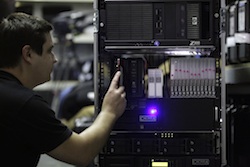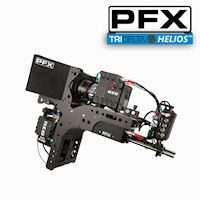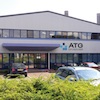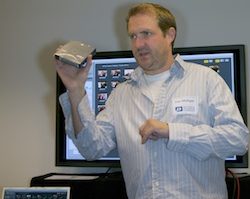
For small production companies and individual productions, an archive is often just a load of hard drives in a drawer – hardly a secure long-term strategy. But what’s the alternative? David Fox reports.
It used to be that the definition of an archive was a shelf with tapes on it. The more sophisticated systems had bar codes and a robot to take the tapes from a shelf to a player, but it was simple and generally reliable. Security was a lock on the door.
Today’s file-based workflow is good for production, great for post production, but can be expensive if you want to retain long-term access to your content.
At the budget end of the business, archive typically relies on hard drives (preferably with at least two copies of any project on separate drives – ideally in separate locations – with every drive booted up and checked at least twice a year). Media management is whatever the non-linear editing system offers.
Hard drives are cheap, but you get what you pay for. “It’s not a question of IF these drives will die, it’s a question of WHEN,” says Richard Payne, Technical Development manager at Holdan, a UK and European distributor for many brands, such as Panasonic.
For long-term storage hard drives are rarely the best option (unless you need regular access to the material), so you need to look at optical disc or digital tape. The least expensive system Holdan offers is a ProxSys MA-10 archive with an internal Blu-ray recorder (£4,250), but “we’ve been disappointed it hasn’t sold,” admits Payne. It may be that users don’t trust Blu-ray, although the best discs should last 50 years, or that they can’t store very much. “If you have a 64GB P2 card, it is annoying to have to span it over two discs,” he says.
For him, the best option is an LTO tape, which can store 1.5TB.
ProxSys, which is part of Vitec Multimedia, recently released an LTO-based system, the £8,450 MA-LTO, which can take XDCAM, Panasonic P2 formats, AVCHD, DV and HDV, and automatically create browsable MPEG-4 proxies to hold on its internal drive, while archiving to LTO-5 tape.
For more demanding work there is also the PoxSys PX range, which starts at about £22,000, although a typical set up costs about £40,000. Because it allows the creation of individual projects, and save a complete edit project for Avid or Final Cut, with different levels of user access (making it more secure), the PX range is proving more popular than the MA range.
Panasonic also offers an LTO system, and archive management software, but it is currently only for P2, so doesn’t appeal to companies that might have to handle other formats. However, Payne has heard that Panasonic is considering a more flexible system.
For production companies that want more flexibility, he says that the most popular choice seems to be based around Square Box Systems’ CatDV software. It has now reached version 9 and can be integrated with LTO, Blu-ray or other storage systems, and handles media asset management and video logging.
The CatDV Archiving Option provides integrated support for archiving files to a Cache-A LTO archive appliance, copying files to the Cache-A vtape folder and keeping track of which tape they have been archived to. Cache-A hardware costs from under $10,000 – the Cache-A Prime-Cache5 is $8,000, and can be used as a self-contained system. Although designed specifically for use with Cache-A ProCache and PrimeCache, the CatDV software can also copy files to hard drives. However, for use with other systems, CatDV can also be used with third party plug-ins from Atempo (for archiving and backup), DAX Archiving (for Blu-ray and tape archive), and Object Matrix (for near-line hard disk archiving).
More Space
The new £8,495 Space LTO Mini is the first in a new line of archive devices from GB Labs. The LTO-5 tape offers write speed of 140MBps, but this exceeds the sustained transfer speeds of desktop systems and most NAS and SAN systems, so most LTO-5 appliances so far use scrubbing techniques to slow the transfer process to match the fluctuating data rate needed. “The inevitable wear and tear on the tape from this shuttling technique has been a major concern for media organisations. Many fear to entrust their media to stressed magnetic tape whose shelf life may be compromised as a result,” claims GB Labs.
Its system includes a 2TB Raid 5 drive array and has the sustained data rate required to transfer files to LTO without continually adjusting the tape speed. “LTO drives are very energy efficient while their capacity and speed make them a great prospect for the industry,” says Ben Pearce, GB Labs’ Sales and Marketing director. “However, broadcasters are interested in the long-term security of their assets so preserving the integrity of the tape is of great importance.”
Its system writes XML and uses the TAR open backup format to ensure data compatibility and interoperability with third party systems for decades to come. It also works with Windows, Mac OS and Unix, and as a networked device can be controlled via the web.
GB Labs also offers the Space LTO archive server for higher performance. It can have up to four built-in LTO-5 drives, writing to all four concurrently at full speed. The 2RU device works with a 10Gb Ethernet network-attached Space storage unit with a sustained performance in excess of 600MBps, and is already being used by the BBC Archive.
MediaConcierge
For-A’s LTR-120HS records MXF files, using the AVC-Intra/DVCPRO codec, to LTO-5 tape (it also has a version, the LTR-100HS, that supports various MPEG-2 formats). It is designed to enable “archive at ingest” and is simple to use, with prices starting at about €25,000.
“LTO-5 high-capacity tape is a simple and effective archive solution for broadcasters and other production facilities,” says For-A Sales director Pedro Silvestre. “The LTR-120HS delivers reliable, cost-effective archiving for AVC-Intra and DVCPRO file-based workflows, and it’s an important new component in For-A’s MediaConcierge content management system.”
It can also be used as a material/programme exchange media server, and has HD/SD-SDI I/O, Gigabit Ethernet interface for file-based I/O, and RS-422 for external VTR control. It fits in a 3RU half-rack unit, with built-in LCD screen for monitoring.
Sony is developing a new optical disc archive storage system that will offer storage capacities between 300GB and 1.5TB. Its initial product, announced at NAB, will be the ODS-D55 drive unit, with a USB 3.0 interface, which will handle an Optical Disc Cartridge containing 12 discs that can be accessed as a single volume.
It is claimed to offer direct and quicker access than linear data tape systems. The media is designed to withstand changes in temperature and humidity, and to be dust and water-resistant. The ODS-D55 will be available in the Autumn, although no price has been revealed.
Sony is also organising an Optical Disc Archive Advisory Group to promote the adoption of the format, with support from numerous broadcasters, including BSkyB, RAI, RedBull Mediahouse, TV 2/Lorry and TVP Poland, plus manufacturers such as Dalet, Front Porch Digital, Harris, SGL, TDK (which will manufacture discs) and Vizrt.
Hot copies
If buying an archive system isn’t within your current budget, there are services that will do the transfer for you, such as the Mobile Transfer System from hire company HotCam, which transfers content from XDCam to LTO tapes via Sony’s new PDW-U2 units.
“Until now, producers with returning series have been very apprehensive about wiping their discs for fear of losing the footage forever,” says HotCam Managing Director Trevor Hotz.
“As a result, many have just kept their old discs on a shelf as an archive and replaced them with hundreds of brand new XDCAM discs each time they go to make a new series. Our new service will not only keep footage safe, it will allow a production manager or financial director to take a big chunk out of their budget and put that money on screen.”
Hotz estimates that even when taking into account the cost of LTO tapes (about £55 each), the price of the transfer and the cost of buying an initial batch of discs, “by the time the fourth transfer is done, producers will start to make a profit against the cost of the discs.”
HotCam has bought £40,000 worth of the PDW-U2 drives (which transfer 50GB in 25 minutes and cost about £2,500 plus VAT) and added them to an automated roll-on-roll-off rig that can transfer as many as 40 50GB XDCam discs per day. The recycling service has been used on The X Factor (ITV) and Coach Trip (C4) – a reality show such as this can use 600 discs per series.
www.atempo.com
www.cache-a.com
www.daxarchiving.com
www.for-a.com
www.gblabs.co.uk
www.holdan.co.uk
www.hotcam.tv
www.matrixstore.net
www.pro.sony.eu
www.squarebox.co.uk
www.vitecmm.com







